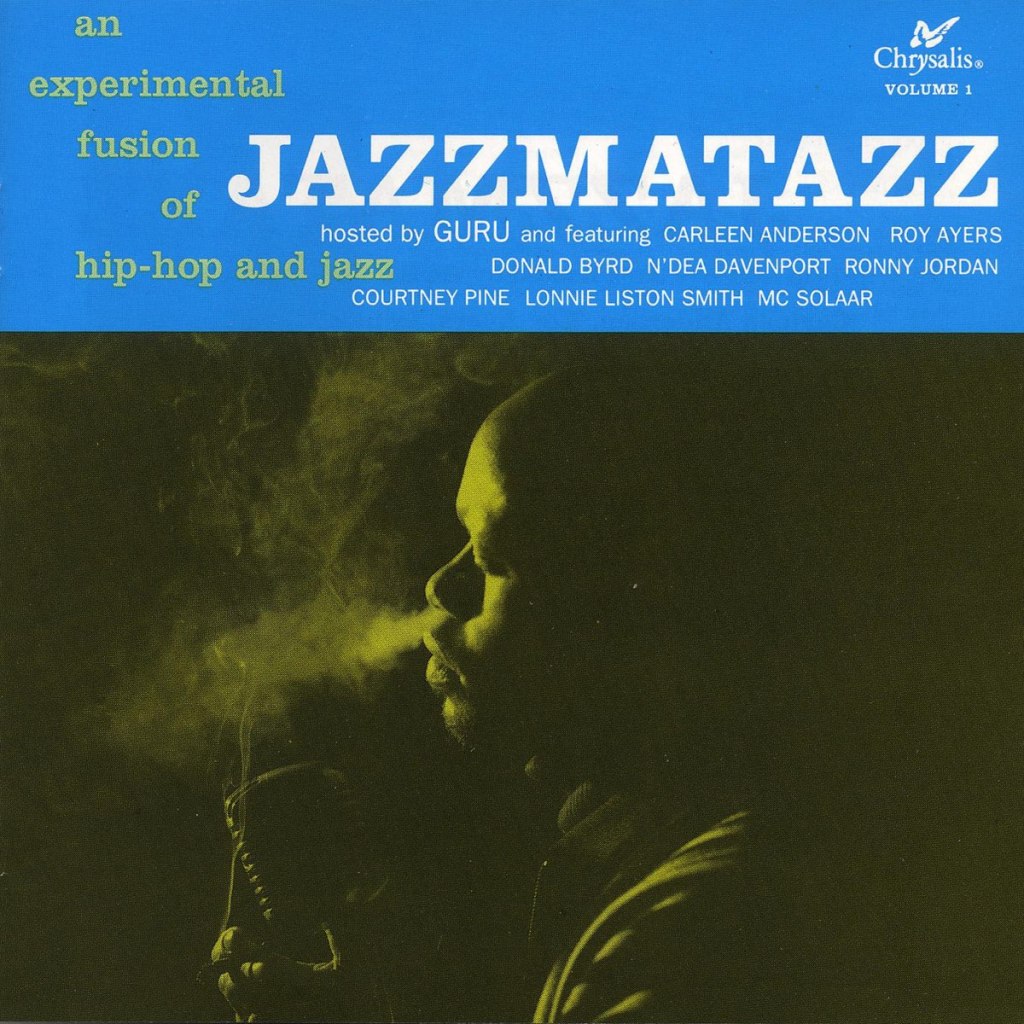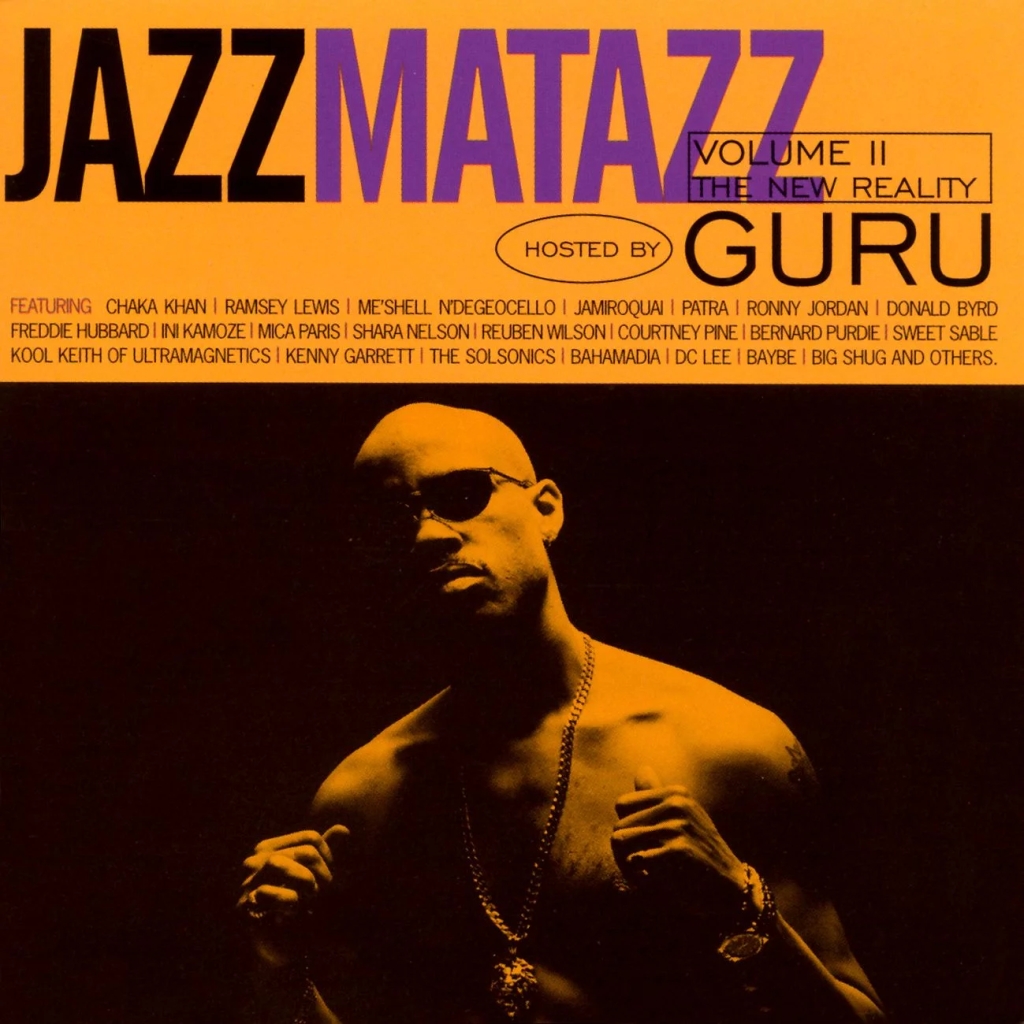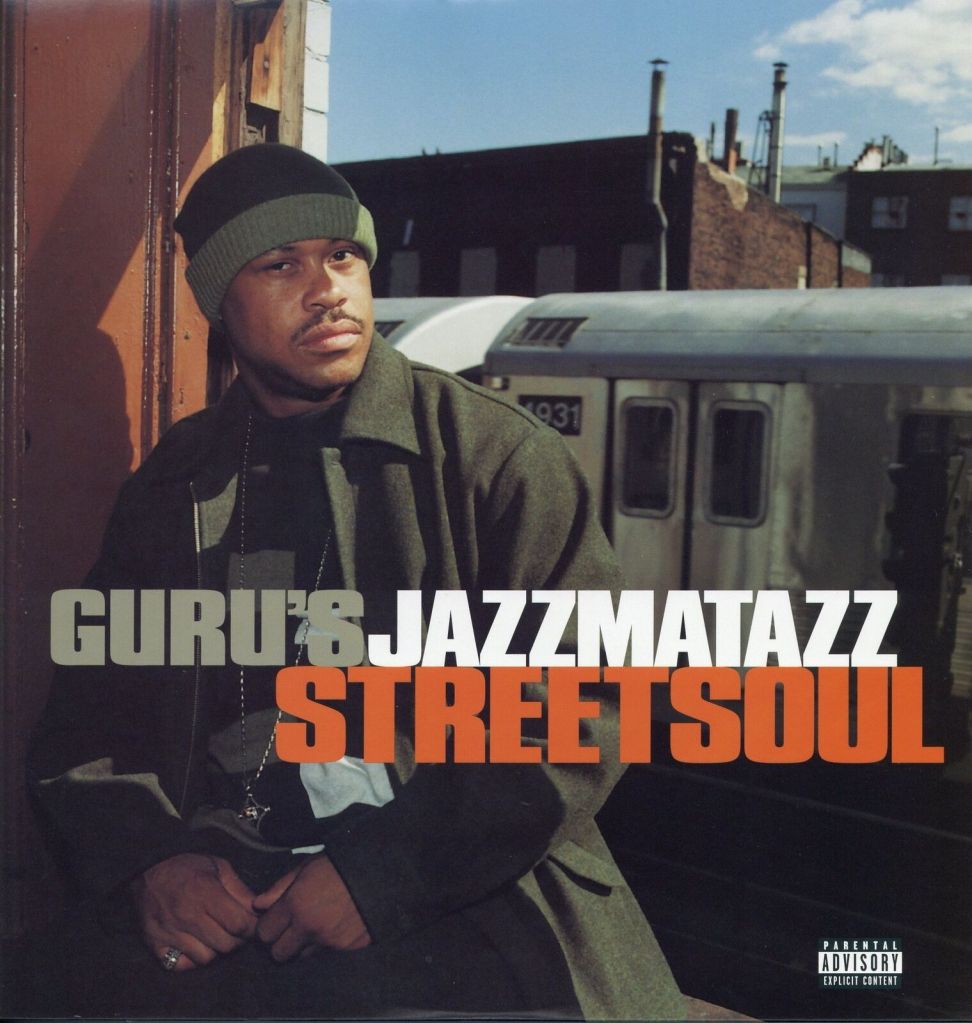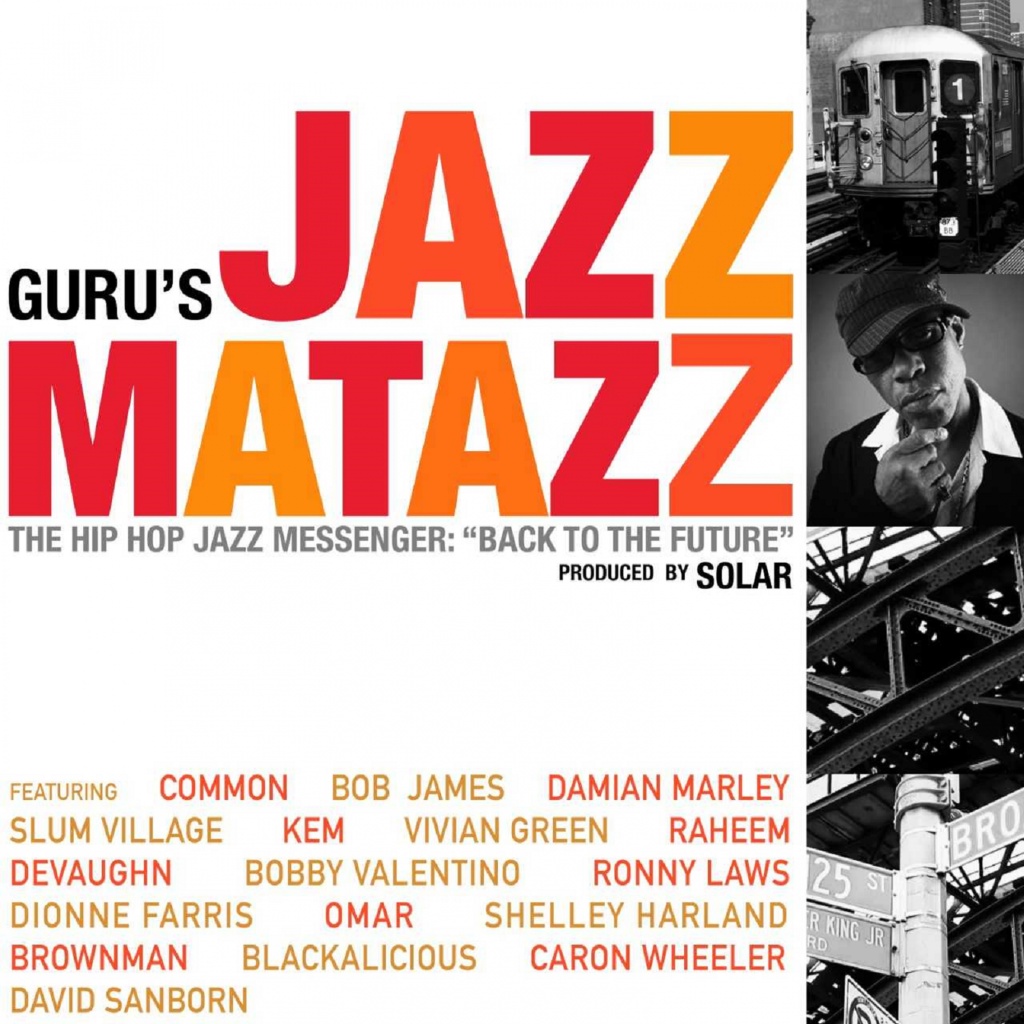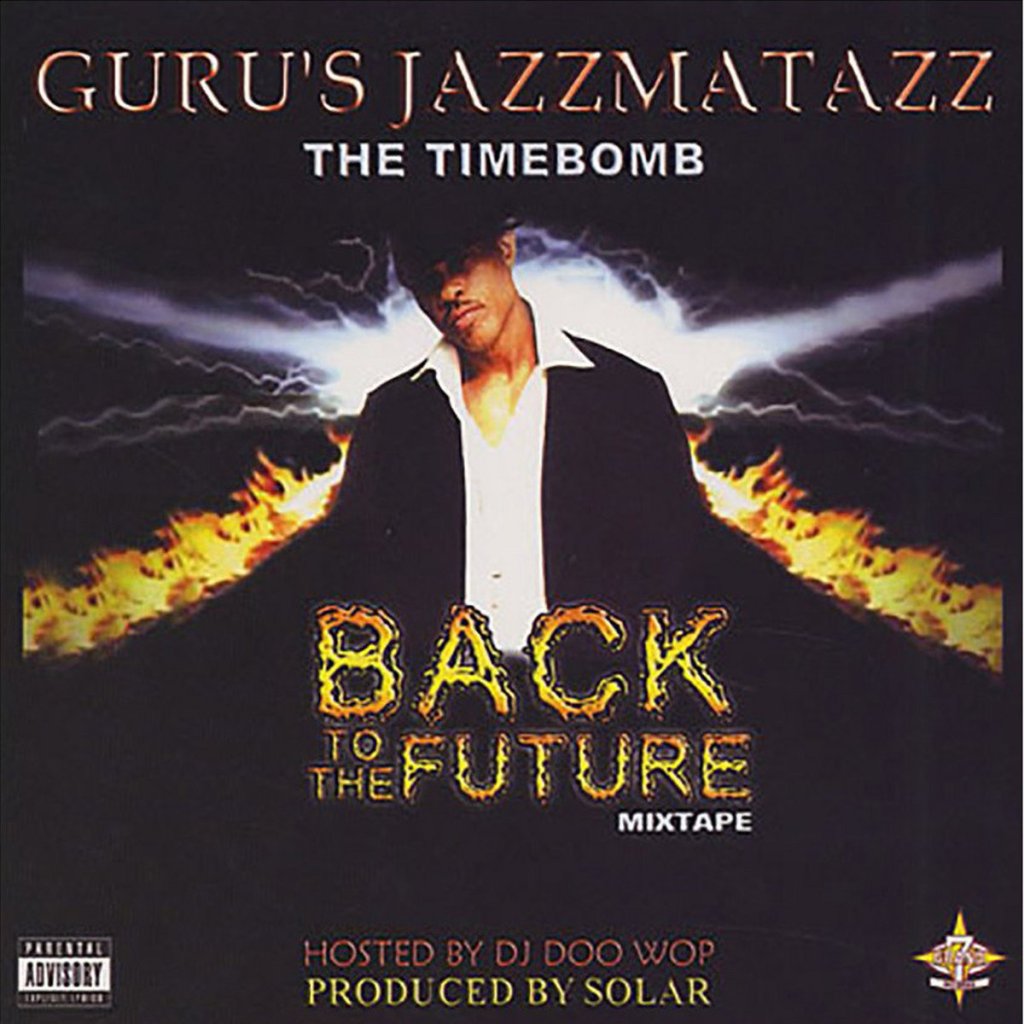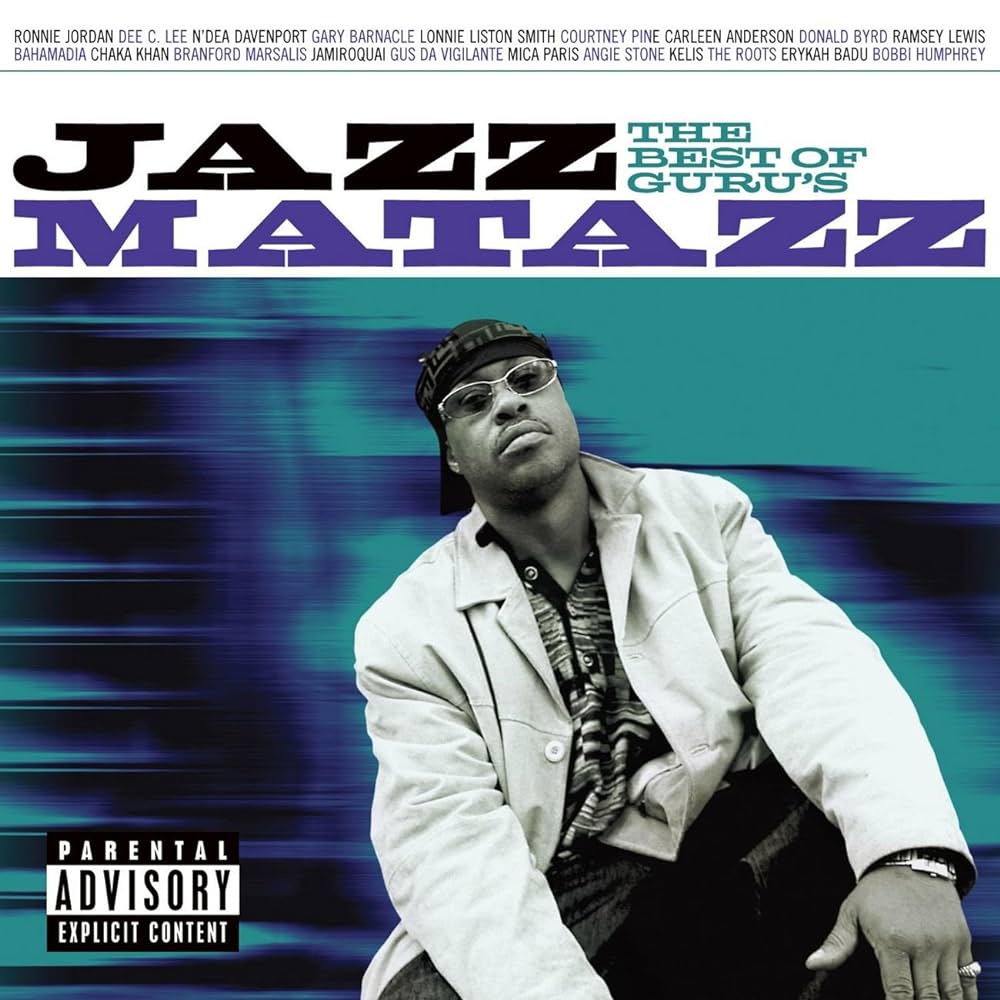Essaying to introduce audiences to a body of work whose first of six installments debuted more than thirty years ago might seem like an oxymoron to most. Yet, considering the multi-hyphenate and still to this day vastly under-appreciated career of hip-hop MC extraordinaire Keith Edward Elam—aka Guru, a backronym for Gifted Unlimited Rhymes Universal—we claim this framework to be based and useful to some. The exceptionally talented American recording artist, producer, and actor, whose career was tragically cut short in 2010, is best known for his long-lasting impact as one half of superstar alt-rap duo Gang Starr, accompanied by DJ Premier on decks and production duties. Fewer people have the Boston, MA-native’s solo career trajectory on their radar though, particularly as it pertains to his contributions as the host of the unsung collaborative live jazz-rap project series dubbed Jazzmatazz. In his own words: “an experimental fusion of hip-hop and live jazz”.
While on a break in-between Gang Starr albums in 1993, the East Coast rapper saw fit to temporarily diverge from his storied trademark partnership with DJ Premier and venture into collaborations with both old-school and new-school postmod jazz stylists. The first 21-track chapter result of the series, Guru’s Jazzmatazz, Vol. 1: An Experimental Fusion of Hip-Hop and Jazz, saw the light of day that same year, and featured notable collaborations with none other than Donald Byrd, N’Dea Davenport, MC Solaar as well as Roy Ayers. While overall positively received at the time, the exploit reveals vast amounts of comfortable smoothness beyond what meets the eye; that both aged incredibly well, and belied Guru’s otherwise streetwise toughness.
To be clear, the sampling and interpolation of jazz segments into rap joints was nothing new to Gang Starr or even other prominent hip-hop collectives at the time. However, the way Guru executes that marriage throughout the six-episode Jazzmatazz series results in much more intricate, slamming, and gently seductive records than their street-anchored ones. Doubling down on his successful series opener, Guru’s Jazzmatazz, Vol. 2: The New Reality followed suit a few years later (1995), with as much as an hour and fifteen minutes of new material, counting an expanded stylistic horizon inclusive of Chaka Khan, Ramsey Lewis, Branford Marsalis and Jamiroquai amongst its ranks. The project ended up commercially outperforming its predecessor, peaking at number 71 on the Billboard 200 chart (Vol. 1 had to make do with number 94) and number 16 on the Top R&B/Hip-Hop Albums list, lending marketable credibility to Guru’s trailblazing vision at the time.
Amazingly, Guru’s Jazzmatazz, Vol. 3: Streetsoul—the following offering in the run arriving five years later—did even better across its sixteen cuts than the previous two albums did. Departing even more drastically from the intelligent hardcore lessons set to incidental jazz on the first two chapters, Vol. 3 embraced more neo-soul and R&B-centric aesthetics, recruiting both genres heavyweights such as Angie Stone, Bilal, Craig David, Donell Jones, and Erykah Badu. Notwithstanding a perhaps more lukewarm critical reception from the reviewing intelligentsia, the album peaked at #32 and #8 on the Billboard 200 and Top R&B/Hip-Hop Albums charts, respectively. Evidently, there existed at the time an audience appetite and marketability for the previously unchartered territory of direct taping live instrumentation to underscore sixteen bars over sixteen bars, aptly spat by a generationally impactful and revered MC.
Initially inspired to pursue his vision by a trip to Europe in the late 1980s, during which his eyes opened to the so-called ‘fusion scene’ where hip-hop breakbeats got grafted onto live jazz sonic mantels, Guru was all too aware that his ongoing undertakings with Gang Starr were loaded with too much pretext and expectation for them to be the right conduits for Jazzmatazz. So, leaning into a softer edge, he fully committed to experimentation under his own name instead. The East Coast hip-hop staple left no stone unturned in pledging allegiance to such cause, ranging from the more obvious instrumental layer all the way to his lyrical content. By his own admission, verses and flows on his Jazzmatazz series are more laidback, more easy listening, although still message-oriented. Moreover, he had no small chip on his shoulder—one grappling with the trials and tribulations that came with the record industry of the time.
Lamenting how the lack of radio hit records with Gang Starr was less attributable to the music’s inherent palatability than to label executives’ shortsighted understanding of what the art stood for, the wordsmith actively sought alliance from jazz and its cats on account of what he saw as a shared cultural curse. Both genres are art forms that are highly relevant and intrinsic to black culture and experience, and they both deal with real emotions. As the rapper learned of the different ways the grandparental record industry tampered and warped jazz in an attempt to increase its commercial appetite in the past, he immediately saw the value in uniting in order to speak truth to power. In a poetic twist of fate (and perhaps not coincidentally), major label Virgin Records, that had earmarked his Jazzmatazz endeavors hitherto, stopped supporting Guru’s recorded affairs after Vol. 3. So he went ahead and founded his own imprint in response; 7 Grand Records.
Guru’s Jazzmatazz, Vol. 4: The Hip Hop Jazz Messenger: Back to the Future—his sixth solo studio LP to date (in-between Vol. 3 and 4., he dropped the standalone projects Baldhead Slick & da Click and Version 7.0: The Street Scriptures)—took a whole other seven years to come to fruition, only to clock in at just shy of an hour of runtime as it was released by 7 Grand Records in 2007. Officially billed as the final installment in the Jazzmatazz canon event, the full length was entirely produced by Solar, and features guest appearances from Blackalicious, Bobby Valentino, Slum Village, Common, and Damian Marley amongst others. However, in a move that put even Frank Ocean‘s 2016 millennium label deal finessing to shame, Guru and 7 Grand saw fit to surprise drop a raw companion mixtape on the same 31st July Vol. 4 came out: Guru’s Jazzmatazz: The Timebomb Back to the Future Mixtape. So much for making a statement of intent directed at the majors.
Ironically, the industrious approach ended up backfiring, turning the right heads in the major label circuit. A mere year later, on the heels of Guru’s growing legacy and influence both within and outside of his Gang Starr lane, dearly departed Virgin Records kind of proved his original point entirely by throwing together a puffy, rushed, and haphazard Jazzmatazz greatest hits compilation. It’s too bad that owing to the EMI/Universal Music Group controlling stake of the body of work’s front-end, the best-of collection only featured 18 cuts, limited to the first three Jazzmatazz volumes. Not exactly the faithful rearview mirror doing justice to the whole creative vision on Guru’s part. Only two years later, and not without having released his swan song solo LP Guru 8.0: Lost and Found, Keith Edward Elam passed away from myeloma at the premature age of 48. Although his carnal manifestation might’ve moved on, his visionary impact is forever. Amidst a genre-less and experimentation-prone contemporary musical zeitgeist, Guru’s Jazzmatazz was both prescient and incisive—as Nate Patrin so eloquently outlines for Stereogum:
Jazzmatazz isn’t nearly as outlandish an idea as its creators might have thought at the time. That seems to matter less than the fact it still bumps, though, and slotted between the two Gang Starr classics that bookend it, it captures one of the all-time greatest MCs at a creative peak. Maybe the more important takeaway is this: it’s always worth celebrating when hip-hop finds a way to do the job of preservation that the conservative purists never really could do alone. And the future belongs to those who know where to take the past.
We’d like to thank you sincerely for taking the time to read this and we hope to feel your interest again next time. RIP Guru.
AV
Below listed and displayed are Guru’s Jazzmatazz volumes (1993-2008):
- Guru’s Jazzmatazz, Vol. 1: An Experimental Fusion of Hip-Hop and Jazz (Chrysalis, 1993)
- Guru’s Jazzmatazz, Vol. 2: The New Reality (Chrysalis, 1995)
- Guru’s Jazzmatazz, Vol. 3: Streetsoul (Virgin Records, 2000)
- Guru’s Jazzmatazz, Vol. 4: The Hip Hop Jazz Messenger: Back to the Future (7 Grand Records, 2007)
- Guru’s Jazzmatazz: The Timebomb Back to the Future Mixtape (7 Grand Records, 2007)
- The Best of Guru’s Jazzmatazz (Virgin Records, 2008)
